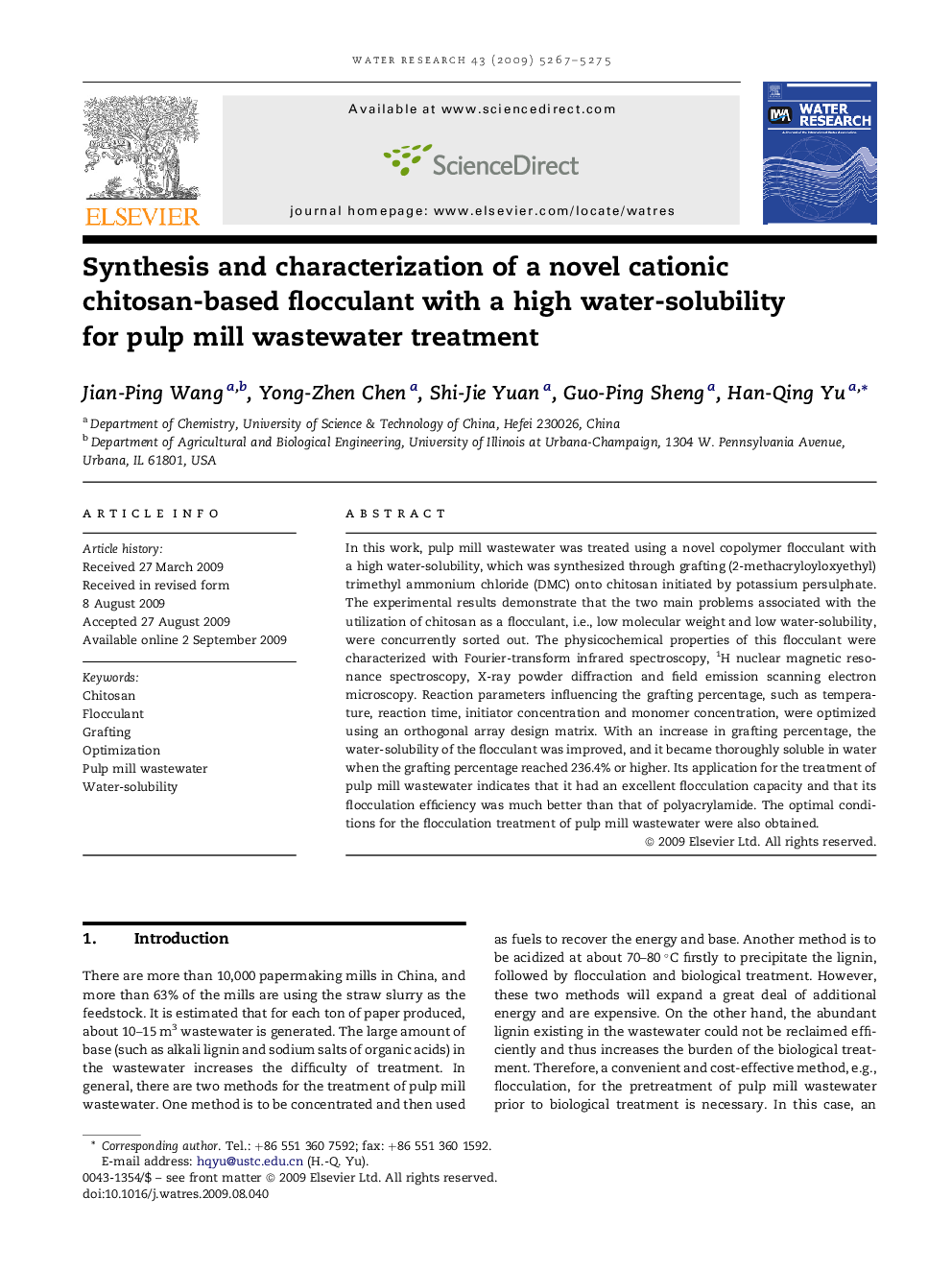| Article ID | Journal | Published Year | Pages | File Type |
|---|---|---|---|---|
| 4485392 | Water Research | 2009 | 9 Pages |
In this work, pulp mill wastewater was treated using a novel copolymer flocculant with a high water-solubility, which was synthesized through grafting (2-methacryloyloxyethyl) trimethyl ammonium chloride (DMC) onto chitosan initiated by potassium persulphate. The experimental results demonstrate that the two main problems associated with the utilization of chitosan as a flocculant, i.e., low molecular weight and low water-solubility, were concurrently sorted out. The physicochemical properties of this flocculant were characterized with Fourier-transform infrared spectroscopy, 1H nuclear magnetic resonance spectroscopy, X-ray powder diffraction and field emission scanning electron microscopy. Reaction parameters influencing the grafting percentage, such as temperature, reaction time, initiator concentration and monomer concentration, were optimized using an orthogonal array design matrix. With an increase in grafting percentage, the water-solubility of the flocculant was improved, and it became thoroughly soluble in water when the grafting percentage reached 236.4% or higher. Its application for the treatment of pulp mill wastewater indicates that it had an excellent flocculation capacity and that its flocculation efficiency was much better than that of polyacrylamide. The optimal conditions for the flocculation treatment of pulp mill wastewater were also obtained.
